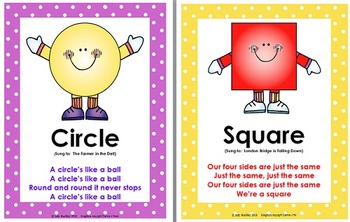

To have success in teaching geometry in the early years, remember to: Play-based learning will provide your students with purposeful opportunities to learn and practice many geometry skills.ħ Tips for Teaching Geometry in Kindergarten You will find your students naturally love learning about shapes, position, and location through hands-on activities and real-world experiences.
#PRE K 3D SHAPE LESSON PLANS HOW TO#
Teach your little ones how to directly compare 2 shapes or objects before moving them on to any form of sorting and classification of 2D shapes and 3D objects. Explore positional language and describe the location of objects.

Discuss the features of 3D objects and 2D shapes. To begin teaching early years geometry concepts and skills, start by investigating what a shape is. Teaching the Foundation stage Geometry concepts will mean you need to be teaching all the new mathematical vocabulary as well as providing plenty of opportunities for investigative play experiences involving shapes, position, and movement. Through fun hands-on age-appropriate learning experiences! How Do You Teach Geometry in Kindergarten? Giving simple directions to guide something or someone along a path Sorting 3D shapes (spheres, cubes, cones & pyramids)ĭiscriminating between 2 dimensional and 3 dimensional shapesĭescribing the position of objects using the everyday language of location and direction, such as ‘between’, ‘near’, ‘next to’, ‘forward’ and ‘toward’, ‘left’ and ‘right’.įollowing simple directions to follow a path So, in the foundation stage (kindergarten, prep, or preschool), the geometry skills you will teach should include:ĭescribing the features of familiar 2D shapes (square, circle, rectangle & triangle)ĭescribing the features of 3D objects and shapes (ACMMG009)ĭescribe position and movement. Sort, describe, and name familiar two-dimensional shapes and three-dimensional objects in the environment. You will need to provide learning experiences for your students to: The Australian Curriculum outlines 2 content descriptors for the foundation stage geometry strand. This blog post explains in detail our F-2 ACARA Math Curriculum and it will show you how to teach ALL the math learning intentions through a play-based pedagogy. If you are interested in learning more about the ACARA Math Curriculum and how you can effectively teach all those math content descriptors through play, check out this blog post: Teaching the F-2 ACARA Math Learning Intentions Through Play Blog Post It is expected that your students will develop an increasingly sophisticated understanding of size, shape, position, and movement as they study the Measurement and Geometry content strand. This is done to emphasise their relationship to each other. Measurement and geometry are presented together in the Australian curriculum. Developing geometry skills is just one part of an effective mathematics curriculum. You don’t want to skip over any one of these content strands or your students will be left with gaps in their math skills and understandings. These content strands are intertwined and build upon each other. The Australian Mathematics Curriculum is organised into three content strands. Geometry is an essential part of the Australian math curriculum. They also investigate properties and apply their understanding of them to define, compare and construct various figures and objects.

They explore the movement of two-dimensional figures in the plane and three-dimensional objects in space. In the Australian curriculum, students are expected to develop an increasingly sophisticated understandings of size, shape, and relative position.


 0 kommentar(er)
0 kommentar(er)
